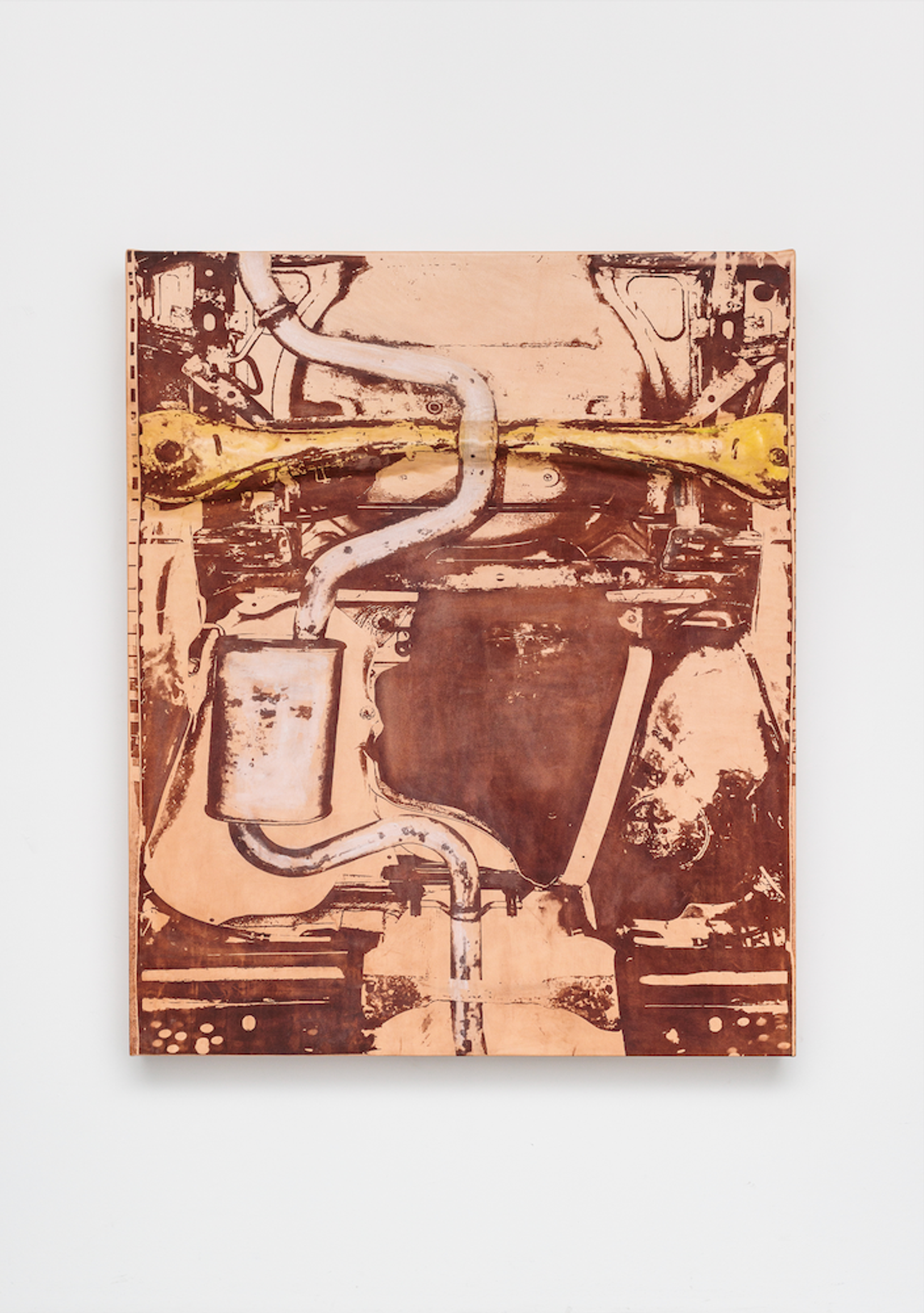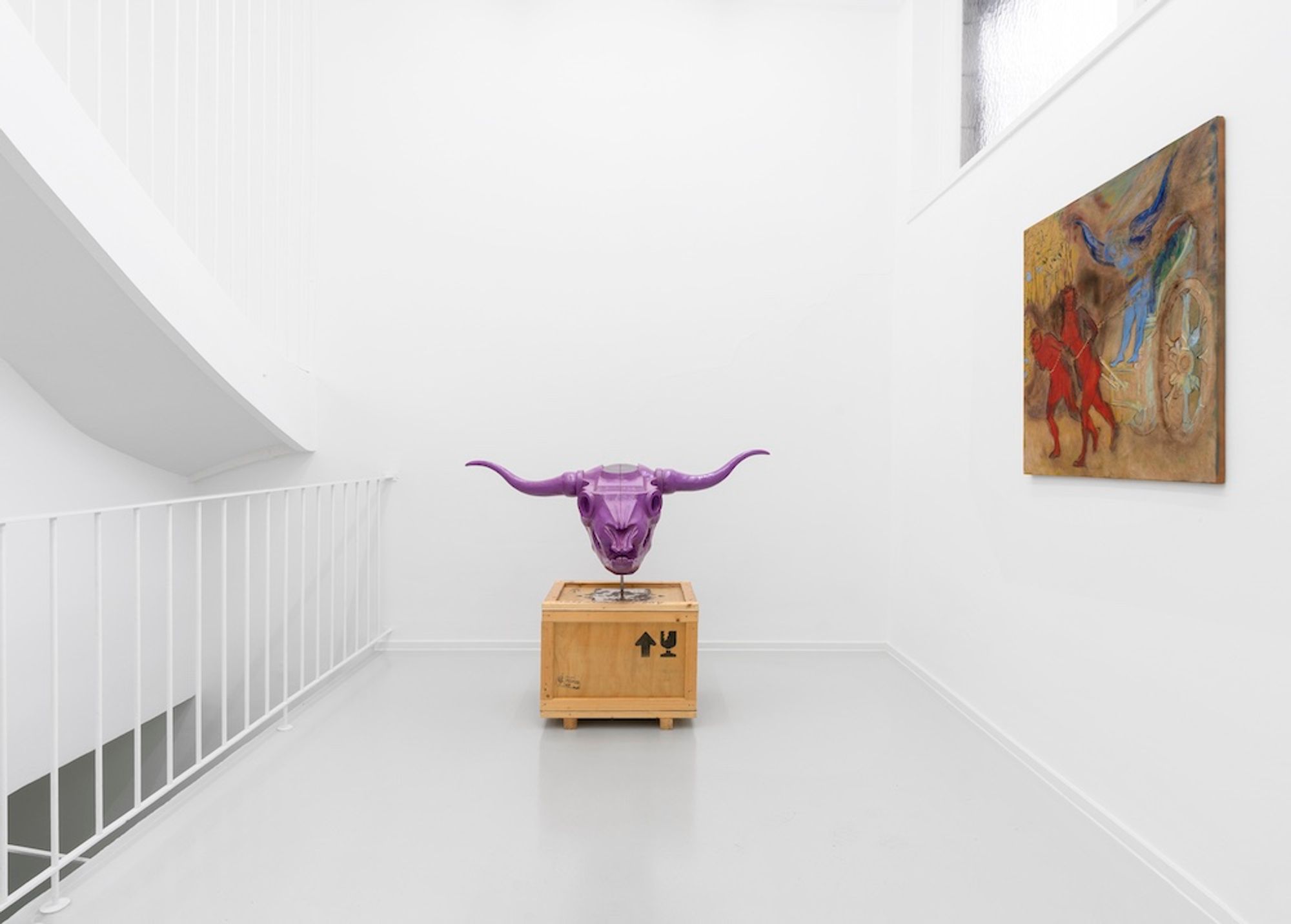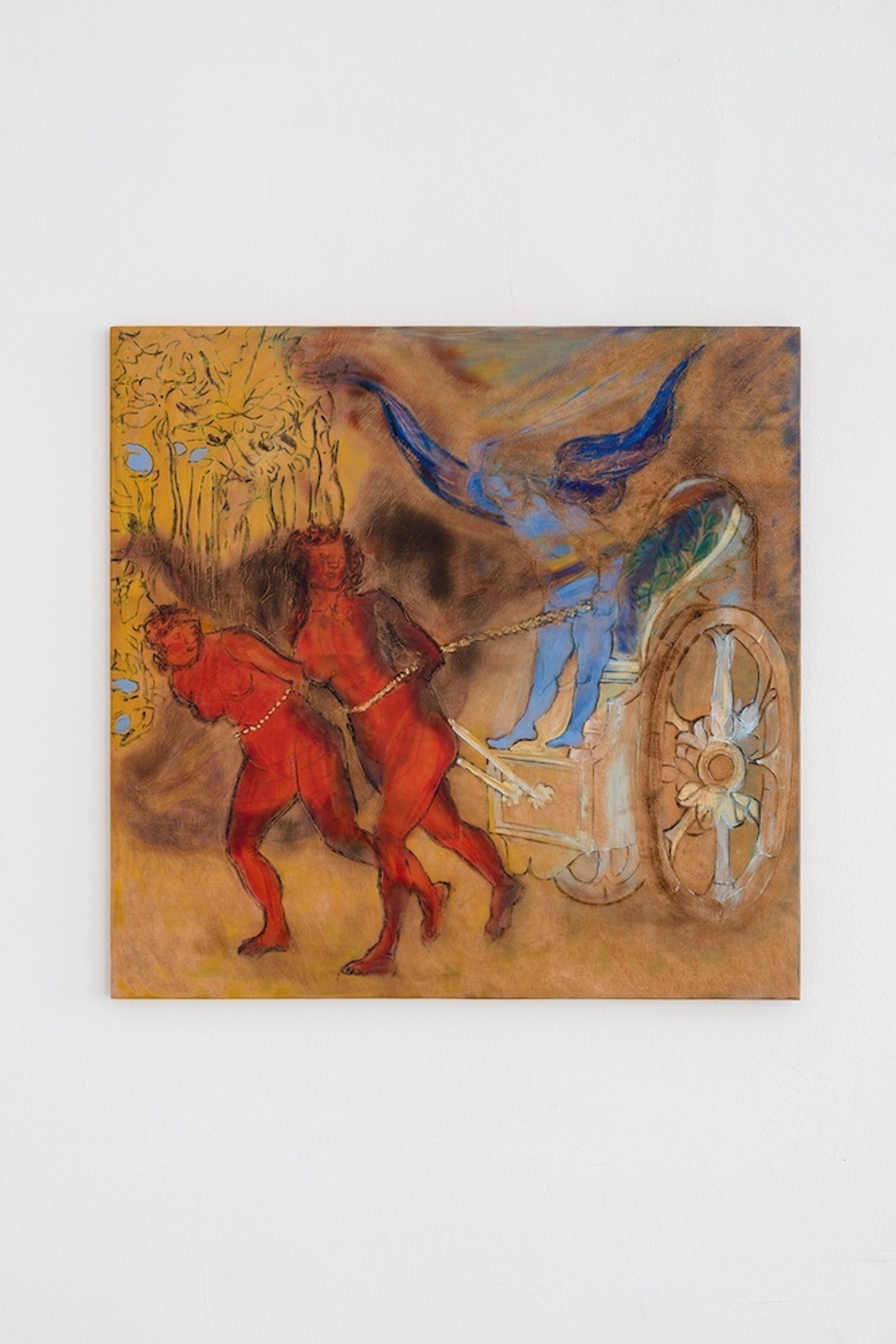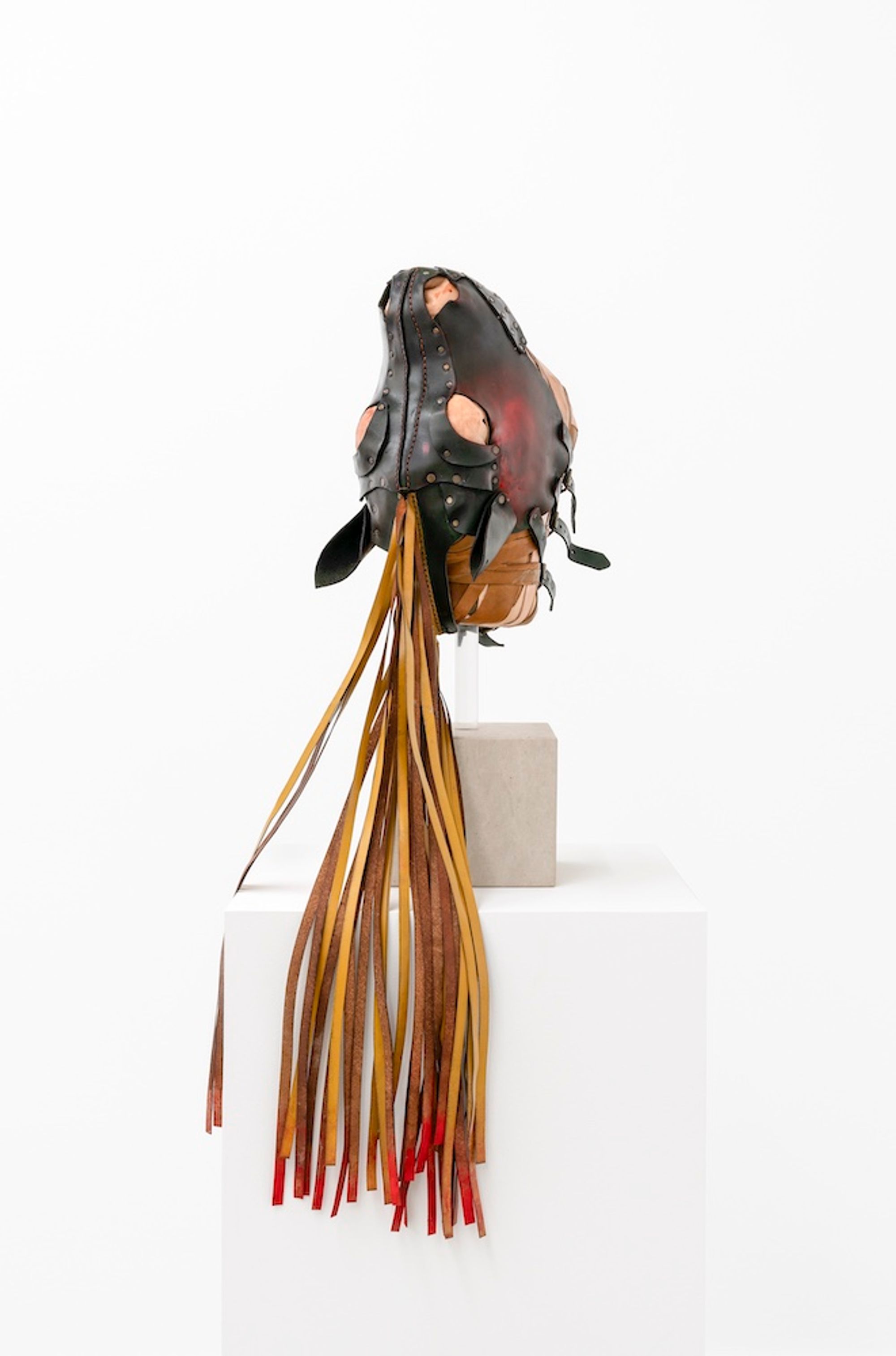Surrogates: Richard Avedon, Alexandra Bircken, Lena Henke
Elisa Schaar
How do we navigate physical spaces and social contexts, and how do these experiences shape our identities? What lies beneath the masks, vehicles, and other layers and extensions of the body that we don as shields for protection or that we use to facilitate our transport? Are they transparent windows into our selves, or opaque barriers to understanding? When we strip away the layers, what stories are inscribed within them? And what emotional and cultural connotations—perhaps even fetishistic ones—do they carry?
These kinds of enduring questions, some of which have been traced back to the eighteenth century by cultural theorists such as Claudia Benthien in Skin: On the Cultural Border Between Self and World, connect artists Richard Avedon, Alexandra Bircken, Lena Henke, and—through Avedon’s photograph of her work in progress—also Nancy Grossman. In the exhibition “Surrogates”, they draw on objects and images from the realms of movement, power, and control, such as motorcycle tanks, bicycle seats, car bellies, tires, bull heads, leather masks, chariots, and snaffle bits. Their works take us on an emotional rollercoaster traversing the exhilarating freedom, exotic allure, and adrenaline-fueled thrill of power and speed while simultaneously confronting the deep-seated feelings of vulnerability, domestication, and subjugation that emerge within the confines of patriarchal contexts.
In Bircken’s works, industrial objects seamlessly transform into body parts, challenging the distinction between humans and machines. In T2 and T3 (both 2023), motorcycle tanks towering on steel pedestals evoke a visceral connection to the human torso, with their open filler necks doubling as orifices suggestive of the respiratory system and serving as points of exchange between inside and outside. Exuding a strong sense of both physical presence and eerie stillness, these tanks convey the sensation of lungs taking one infinitely long breath in and out at the same time. Thus, the works connect to Bircken’s long-standing exploration of the similarities, intersections, and complementarities between the organic and the mechanical, as well as between physical and technological, animate and inanimate structures.
Meanwhile, Mittelfleisch (2024), a leather-covered bicycle seat cast in bronze, features a provocative slit that evokes the intimate contours of the perineum—the area between the anus and the external genitalia. The saddle frames and exposes these private body parts through its cut-out design. With its seams and the grainy leather texture, the bronze seat becomes a tantalizing fusion of industrial object and organic life. This interplay between media and the body transforms the seat into a prosthetic extension, simultaneously revealing the inherent prosthetic qualities present in the human form.
While Bircken particularly attends to the transformative qualities of shells and layers, Henke brings a distinct yet related perspective. With her interests in architecture and urban planning, she explores how we navigate physical space and how societal structures shape our experiences in turn. In A Hard Shoulder I (2024), Henke piles a few dozen used car tires high to obstruct the gallery window. The arrangement transforms the tires, typically symbols of mobility, into barriers, suggesting the paradox of urban environments that can be both liberating and confining—much like the consumer items with their environmental impact that populate them. Neatly arranged in a pattern reminiscent of knitting—a traditionally feminine craft—the installation prompts reflections on gender dynamics in urban environments. Evoking the dual imagery of an emergency lane and the tension in a strained body, the title conjures themes of flow and fixity.
Henke not only examines how we navigate urban spaces, but also delves into the personal connections individuals form with their vehicles. In Combustions 19 [The Belly of My Car] (2024), she laser-etches a precise image of her car’s anatomy—evidently captured while lying beneath it—onto raw leather, which is then mounted on a wooden panel to form a relief. Representative of her interests in the relation between the organic and the artificial, the piece invites viewers to contemplate the flipside of personal freedom and the fetishistic relations we develop with machines. In doing so, it also prompts reflection on how the spaces we inhabit shape our identities, including gender.
For Bircken and Henke, the photograph by Avedon that provides a rare glimpse into Grossman’s studio—featuring four unfinished, carved wooden heads before being covered in leather—serves as a poignant entry point for exploring their shared sculptural interests. Created in New York from the late 1960s onward, Grossman’s series of leather-clad sculptures engages themes of identity, violence, and trauma. In these works, the leather, often covering the eyes of her figures, evokes conflicting impressions of protection and assault, concealment and exposure, power and restraint, alluding to complex, hidden emotional and psychological states lurking beneath the surface. Avedon’s photograph of a work in progress in 1970, capturing Grossman’s sculptures in a naked manner, epitomizes a sense of the body where there is no separation between exterior and interior.
This lack of separation is precisely where the sculptural interests of Bircken and Henke converge. Like Grossman, both turn to sculpture—the medium traditionally linked to the representation of the human form—leveraging it for its presence, three-dimensionality, and emphasis on weight and scale. And both artists employ skin-like structures and materials, akin to Grossman. However, here skin emerges in a way articulated by media theorist Bernadette Wegenstein as “porous and fluid, the site of encounter and exposure between body and media rather than a site of exclusion and closure”. While Grossman’s sculptures suggest inner turmoil, Bircken’s and Henke’s works consider how bodily experiences and identities are shaped by the physical spaces that surround them. Their works resonate with N. Katherine Hayles’ assertion in How We Became Posthuman (1999) that “embodiment is contextual, enmeshed within the specifics of place, time, physiology, and culture”. By exploring the rich meanings of masks and vehicles, “Surrogates” deepens our understanding of embodiment and invites reflection on our experiences in a mediated world, where identities are not fixed but in constant flux.
Elisa Schaar is a scholar, writer, and curator specializing in recent and contemporary art. Working frequently with artists, her articles and exhibitions have appeared in a range of different contexts. She is a Senior Tutor in Art History and Theory at the Ruskin School of Art at Oxford University.




















